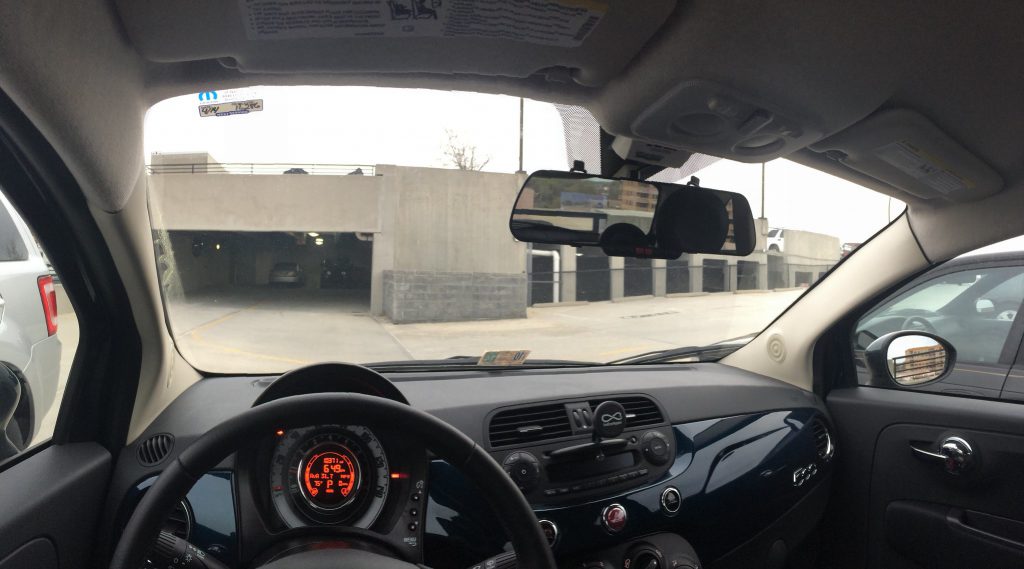
Video rules the news, social media, advertising and marketing, family and holiday occasions, and countless other ways we interact with each other in the world. It captures the attention of millions every day. Video can also bring a feeling of security in various settings. But a camera in your car? To some people, the use of a dashboard camera, or dash cam, is a little unsettling. To others, it brings reassurance.
Dash cams are increasing in use across the United States and countries around the world. They allow drivers to record what happens inside the vehicle with in-cabin cameras, as well as record activity in front of the vehicle (showing the entire expanse of the street) with forward-facing cameras. Despite possible Big Brother fears, people almost everywhere are embracing the use of dash cams.
Wide acceptance
In the United Kingdom, where approximately 20 percent of all drivers use a dash cam, law enforcement reported consistently fewer crashes (400 fewer per month) as well as a 30-percent decrease in traffic-offense reports in a single year.1 However, not all European countries are as accepting of dash cams, because of privacy concerns. For example, Austria, Luxembourg and Portugal ban the use of dash cams, reports one dash-cam manufacturer.
Here in the United States, until recently commercial drivers and fleet operators comprised most dash cam users. Fleet operators have found these devices helpful to protect their drivers from false claims of fault in road incidents. Footage from both in-cabin and forward-facing cameras can be used to ensure — and prove — drivers are not distracted, for example. Video evidence can make a pretty strong argument that a driver is not at fault in a collision. Of course, dash-cam footage can also work against drivers, proving that they indeed were responsible for an accident.
Interest in dash cams by noncommercial drivers in the United States has been increasing over the past several years, and designers of this technology have both instigated and met the demand for some incredible features. Dash cams are available in a wide price range, from $30 to $200 and much higher. These manufacturers design cameras with all the bells and whistles (or rather, sensors and alarms) to attract people who feel compelled to have the newest, best tech, as well as those who are simply looking for ways to protect themselves and their vehicles.
Features keep getting better
Dash cams can have some amazing features, and the tech just keeps getting better:
- Dual cameras for inside (in-cabin) and front (forward-facing) views
- Audio recording, color screens and high-definition video
- Touch-screen navigation menu for ease of use
- Embedded GPS device (connected to an app on your phone) to track speed, time and location
- Built-in Wi-Fi for file transfer
- Advanced sensors to pick up maximum light and movement
- Infrared night vision for both internal and external lenses
- Parking mode with motion-detection sensors and time-lapse features
- Ability to receive push notifications on your phone to alert you of problems such as your parked car being hit
- Memory SD card to store footage
- Loop recording that overwrites the oldest footage automatically
- Video backups uploaded to your phone or Cloud storage
Benefits for drivers
In addition to proving or disproving fault in a crash, dash cams can deter would-be scammers from committing fraud at your expense. Dash-cam footage can thwart people looking to extort money by purposely causing an accident and demanding money for supposed car repairs or worse, for fake injuries.
Some cameras have a night-vision feature to monitor and record suspicious activity or attempted break-ins when you are away from your car. You may then receive a push notification on your phone to alert you. (Maybe you can finally catch the perpetrators of those scrapes and scratches that appear on the side of your car at your work, apartment or condo complex’s parking lot!)
Other uses include parents monitoring their teen drivers; discouraging rogue valet parking attendants from taking a joy ride in your vehicle; capturing random traffic, crime or cosmic events (check out that shooting star!) during your daily travels; and recording beautiful scenery on your vacation drive!
Video First Notice of Loss
In this age of video, increasing numbers of people are sending dash-cam videos to establish that they are not at fault and to expedite the claims investigation and process. One day in the near future, instead of making a phone call to your agent immediately following an accident, break-in or theft, it may become routine practice for drivers to send a “video First Notice of Loss” (vFNOL) directly to the insurance adjuster. Automated vFNOL is already available in a limited capacity and is just beginning to take off in the insurance industry.
In addition, the camera’s GPS function can provide valuable information including the exact time and location of a crash and the speed of the vehicles involved. This data can provide evidence to support your side of the story in an accident investigation. However, it could also potentially be used against you in a court case.
Do your homework
As the popularity of the dash cam continues to grow, you may decide to get in on the trend. Do your homework first, to make sure you know what features you are installing and which functionality you are enabling. Aside from the many benefits, be sure to think through the down sides of its use as well.
For example, if you are concerned about Amazon’s Alexa or Google’s Nest listening in at home, you may not be entirely comfortable with your dash cam recording your conversations and driving habits (and in some cases uploading to the Cloud). However, much like smart-home technology, the benefits of the dash cam may outweigh concerns. Video rules, but you have the choice to determine its place in your own vehicle.
by Kris A. Mainellis